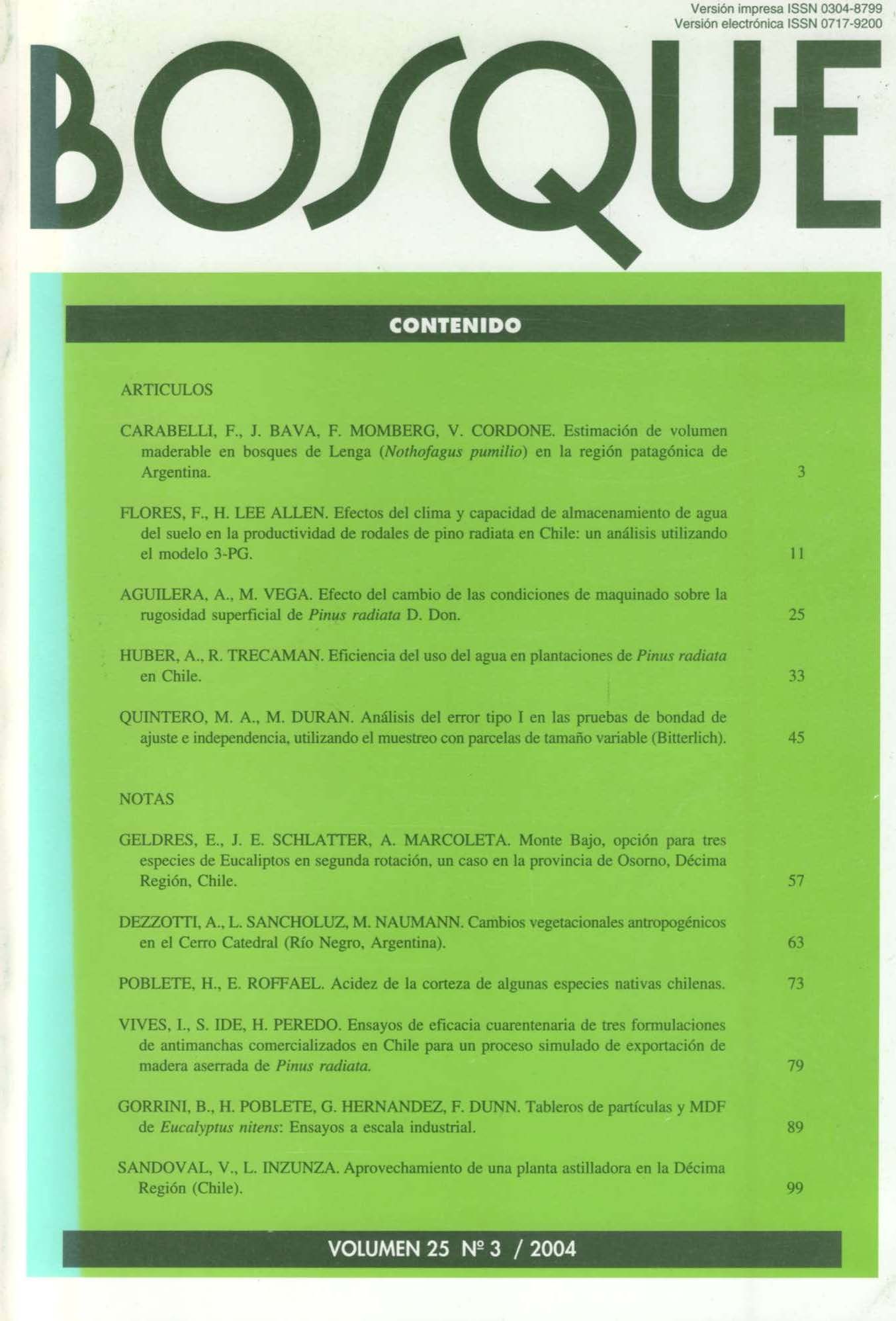Main Article Content
Dec 31, 2004
Abstract
Radiata pine (Pinus radiata, D. Don) is planted across a wide range of soils and climate in Chile, and plantations exhibit a great variation in productivity. In order to effectively manage, we need to quantify potential productivity, determine the principal non-manipulated site and stand factors that determine the potential, identify which stands are currently performing below their expectations, determine which soil and/or stand limitations result in suboptimal production in these stands, and develop silvicultural treatment regimes to effectively ameliorate the identified limitations. To estimate potential productivity, we used the ecophysiological model 3-PG to provide estimates of stem wood production for fully stocked radiata pine plantations located in the VI to IX regions of Chile. 3-PG was also used to explore the effects of climate and soil water storage capacity on potential productivity. Potential productivity estimates for radiata pine from 3-PG ranged from 14 to 44 m3ha–1yr–1. Within the study area, precipitation was responsible for much of the variation in potential productivity. The model indicated considerable variation in the extent and magnitude of soil water limitations.


